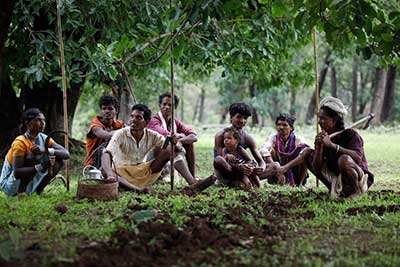Date: 22/10/2022
Relevance: GS-3: Conservation, Environmental Pollution, and Degradation, Environmental Impact Assessment.
Key Phrases: Union Environment and Forest Ministry, Forest Conservation Rules, 2022, National Commission for Scheduled Tribes, Forest Conservation Act (FCA), 1980, Forest Advisory Committee, compensatory forestation.
Why in News?
- The National Commission for Scheduled Tribes (NCST) had recommended to the Union Environment and Forest Ministry to put the new Forest Conservation Rules, 2022, on hold.
Six-member working group:
- The NCST formed a six-member working group that included members of the commission and experts to look into whether the rules issued violated any provisions in the Forest Rights Act (FRA) and if they infringed upon the rights of tribal people, according to officials.
- Based on the conclusion of this working group and repeated dialogue with villagers in forest areas and other stakeholders, the commission decided to recommend that the new rules be put on hold.
What are the Forest Conservation Rules?
- The Forest Conservation Rules deal with the implementation of the Forest Conservation Act (FCA), 1980.
- They prescribe the procedure to be followed for forest land to be diverted for non-forestry uses such as road construction, highway development, railway lines, and mining.
- The broad aims of the Forest Conservation Act are to protect forests and wildlife, put brakes on State governments’ attempts to hive off forest land for commercial projects, and strive to increase the area under forests.
- Forest Advisory Committee (FAC):
- For forest land beyond five hectares, approval for diverting land must be given by the Central government.
- This is via a specially constituted committee, called the Forest Advisory Committee (FAC).
- This committee examines whether the user agency or those who have requested forest land, have made a convincing case for the upheaval of that specific parcel of land, whether they have a plan in place to ensure that the ensuing damage — from the felling of trees in that area, denuding the local landscape — will be minimal and the said piece of land doesn’t cause damage to wildlife habitat.
- Once the FAC is convinced and approves (or rejects a proposal), it is forwarded to the concerned State government where the land is located, which then has to ensure that provisions of the Forest Right Act, 2006, a separate Act that protects the rights of forest dwellers and tribals over their land, are complied with.
- The FAC approval also means that the future users of the land must provide compensatory land for afforestation as well as pay the net present value (ranging between ₹10-15 lakh per hectare.)
What do the updated rules say?
- The latest version of the rules consolidates changes to the Act over the years from various amendments and court rulings.
- Private plantation:
- The rules make a provision for private parties to cultivate plantations and sell them as land to companies who need to meet compensatory forestation targets.
- This, according to the government, will help India increase forest cover as well as solve the problems of the States not finding land within their jurisdiction for compensatory purposes.
- Consent of Gram Sabha for diversion of land:
- Prior to the updated rules, state bodies would forward documents to the FAC that would also include information on the status of whether the forest rights of locals in the area were settled.
- After 2009, the Environment Ministry passed an order mandating that proposals would not be entertained by the FAC unless there was a letter from the State specifying that the forest rights in the place had been “settled” and the gram sabha, or the governing body in villages in the area, had given their written consent to the diversion of the forest.
- However, there have been a series of orders by the Environment Ministry over the years that have sought to skirt the necessity for consent from the gram sabha.
- The new rules formally codify this and say that a project, once approved by the FAC, will then be passed on to the State authorities who will collect the compensatory fund and land, and process it for final approval.
- Only in passing, is it mentioned that the States will ensure “settlement” of Forest Rights Acts applicable.
- This, many forestry experts say, doesn’t automatically imply the consent of the resident tribals and forest dwellers.
Concerns:
- Favour of Corporates:
- Corporates and other commercial entities can now easily arm-twist tribal communities to obtain necessary consent or suppress any opposition.
- Plantations for commercial use by private players are another threat as the locals will be deprived of the use of land primarily meant for them
- Threat to biodiversity:
- Tribals use the revenue forest land for livelihood purposes. The new guidelines allow private players to use the land for plantation, which can lead to monoculture cultivation — thus affecting biodiversity.
- Relaxed clearance process:
- Due to relaxation in the clearance process a developer does not need to take clearances at one go for diverting land use.
- One may take approval over a part of the land to begin the work and take clearance at the final stage.
- Such a provision would encourage illegalities and confusion and the statutory requirement of obtaining the consent of locals can be ignored.
Conclusion:
- The new forest protection regulations should be re-evaluated following constructive consultations with the key stakeholders.
- They must be adjusted to take into account the crucial importance of tribal and forest rights and the responsibility of the government to safeguard them.
Source: The Hindu
Mains Question:
Q. What are the Forest Conservation Rules 2022 and how will these affect forest dwellers and tribals? Examine.








